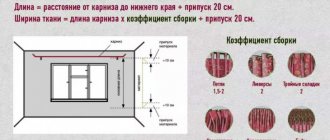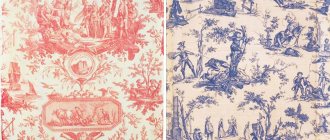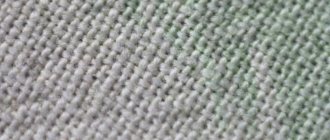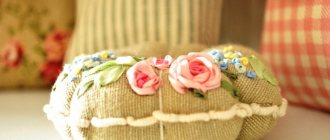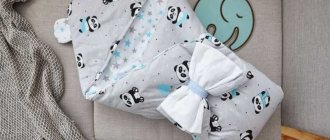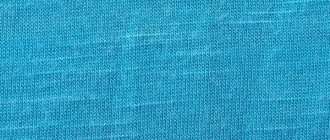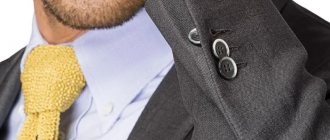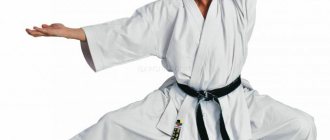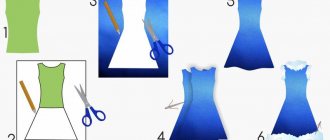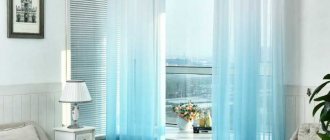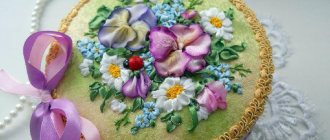“Houndstooth”: retro interior with the scent of Chanel No. 5
Through the efforts of the inimitable Chanel, the houndstooth print is considered an example of sophistication and good taste, but it was not invented by Mademoiselle Coco. A broken cell, smeared diagonally, comes from Scotland, or more precisely from the historical region of the Border, adjacent to the English border.
Practical Scots do not do anything for nothing - the colors of kilts and plaids carried information about the clan affiliation and status of the owner, despite the fact that a meeting with representatives of a hostile family in the mountains could end in failure. Not wanting to become victims of infighting, border shepherds invented the black and white border tartan pattern to signify neutrality.
However, even in the Scottish mountains, the “houndstooth” did not appear out of the blue - individual elements of the pattern cover archaeological artifacts found during excavations of ancient Roman colonial cities, church vestments of the 12th century and individual elements of Venetian architecture.
The first wave of interest in houndstooth arose with the development of the tweed industry in the Victorian era, when technologies for the industrial production of patterned wool from colored yarn were discovered. The pattern is formed by four dark and four light threads in both warps with a twill weave. An alternative is to use two threads under the warp and two above the warp, raising the overlap by one thread each time. Nowadays, “houndstooth” can be printed on any fabric.
The traditional design of the houndstooth is black and white, but in the mid-twentieth century new options began to appear - white-gray, black-yellow, red-blue, white-blue and white-red. Nowadays, the number of combinations cannot be counted at all. There is a suitable combination for every taste. The scale of the design also varies over a wide range: from the “small step” to the large caliber of the 60s and 80s.
The main use of houndstooth in textile design is in upholstery fabrics and accent pieces for modern and vintage interiors. A small pattern is the prerogative of the country style: from a distance the pattern is perceived as a checkered pattern, but up close it does a good job of masking scuffs and stains. A large “houndstooth” in the spirit of Lady Gaga brings expression and dynamics to the cold aesthetics of minimalism and enlivens the monochrome interior. A few sofa cushions, decorative bedspreads or a blanket refresh a boring environment, and a rug or rug in a houndstooth pattern creates an impressive backdrop for strict, laconic furniture and visually expands the room.
Houndstooth curtains are rare: contrasting prints against the light tire the eyesight, although some designers argue that such a solution visually raises the ceiling in a cramped, darkened room and helps avoid excessive restraint in “masculine” interiors.
A stunning example of the unconventional use of houndstooth print is provided by Driade, which has released a series of Cape West garden furniture. The recognizable pattern is formed not by threads, but by plastic strips intertwined in a two-by-two manner.
Houndstooth complements plain materials well; combinations with flat checks, stripes, zigzags and small floral prints are also allowed. It is not recommended to use more than three accents in one room. The exception is the funk style, in which everything is allowed except monotony and boredom!
Houndstooth upholstery
Houndstooth curtains
LiveInternetLiveInternet
Cell
Perhaps the most popular “checkered” pattern in the world is tartan.
The birthplace of tartan, as many of us probably know, is Scotland. It is often called “tartan”. Tuar tan means "color of the area". Each Scottish clan had its own non-repeating pattern and color combinations. Initially, tartan was dyed with natural ingredients: alder bark, seaweed, etc. There are now several hundred colors of tartans in the world, some of them were created for exceptional purposes, for famous people or in honor of memorable events. The famous Burberry check is one of the variations of tartan.
Monochrome Vichy was created in France. Initially, the pattern was used for interior fabrics, and in the 1950s it migrated to clothing.
Now Vichy comes in more than just black and white colors. Combinations of white with blue, white with pink are already considered classic.
A variation of the cage is the Glencheck. Scottish shepherds were the first to use it. This color meant that its wearer did not belong to any clan, i.e. neutral This was a kind of protection during the constant military skirmishes of the warlike Scots.
It is considered the progenitor of another popular print - the houndstooth or pedepoule. A large crow's foot is called a "dog tooth".
You can distinguish between a “crow’s foot” and a “dog tooth” by looking closely at the cage. In the “dog tooth” it is elongated, and in the “crow’s foot” it is more regular in shape.
The birthplace of the Madras cell is the Indian city of Madras.
In the vast majority of cases, the Madras checker uses more than two colors and the cage is of different sizes.
Strip
The most famous is the sea stripe.
Repeating stripes in two colors. We owe the popularization of the print to Coco Chanel.
Stripes of different colors (and often different widths) are called raiye.
One of Raye's most famous fans is designer Paul Smith.
The motley stripe, broken in the form of zigzags, is already called in honor of its creator - missoni.
The idea of creation belongs to the wife of the creator of the brand, Ottavio Missoni, Rosita Missoni.
Color
A smooth transition from one color to another or from one shade to another (for example, from dark to light) - ombre.
A variation of ombre is tie dye.
“Blurred” patterns are obtained from uneven dyeing of the fabric; often the fabric is twisted in various ways. Tie dye was popular during the era of hippies who hand-dyed fabrics.
Rhombus
Scotland is also considered to be the birthplace of the diamond, or more precisely its most popular variety, argyle.
Argyle - diamonds of repeating colors.
Polka dots
The second name polka dot has already become firmly established in our everyday life.
One of the most ancient prints. It was popular back in ancient times, was forgotten in the Middle Ages and again regained its position in the 19th century. In Switzerland, cambric fabric with such a pattern was called “Swiss polka dots.” It was considered a print of the poor. In England in the 19th century, the production of inexpensive chintz with polka dots was launched. But soon the aristocrats also appreciated the merits of peas. The first who dared to wear a polka dot tie was fashion trendsetter Beau Brummel.
Floral prints
They have been used at all times and are incredibly popular in modern times. Timeless and most famous:
Turkish cucumber, also known as paisley.
Paisley has nothing to do with a real cucumber; in fact, it is an element of an ornament called buta. it first appeared in the Sassanid Empire, an ancient state located in the territory of modern Iraq and Iran from 224 to 651 AD. And from there it spread throughout Central Asia. It came to Europe in the 16th century from India on the wave of colonial conquests. But Indian fabrics were expensive, and enterprising Scots from the small town of Paisley decided to produce fabric with a popular pattern. This perpetuated the name of the city for centuries.
Today we most often see paisley on Etro fabrics.
Another ornament that came from the East is the arabesque.
Fractal repeating floral and geometric patterns reminiscent of Indian mandalas.
But we owe the appearance of the millefleur to France.
Like the Vichy check, this print was not originally used in clothing. Mille fleur is the color of bed linen (most often cotton paper fabrics were dyed in a small flower). In modern times, we can see variations of millefleur in the collections of Orla Kiely.
Another “floral” print is the royal lily or fleur-de-lis.
Emblem of royal power in France. True, if you believe historians, it is not a lily that is depicted, but an iris.
photo: hypebeast.com, stylezer.com, fabric.com, artpaintingzone.com, tumblr.com
Paisley, or “Turkish cucumber”: the soul of the East
The oriental paisley pattern is one of the oldest designs in the world, believed to have been invented in Persia during the Sassanid era. The basis of the pattern is made up of isolated teardrop-shaped patterns, complemented by complex ornate painting, combining floral and geometric motifs. The directional arrangement of the design elements creates the effect of pattern movement.
The rich color scheme is in harmony with the deep symbolism of the ornament. In Zoroastrianism, the tapered paisley pattern is associated with the slender silhouette of the sacred cypress tree and the flames that created the world. Typically, in India the pattern is called “buta”, which means “fire” in Sanskrit.
Antique samples of oriental fabrics with hand-printed patterns make a strong impression with their fine detailing of the cucumber filling. In Persia, good wishes and poems were written into the elements of the ornament using calligraphic script; in India, paintings depicting mythological scenes were embedded.
Back in the Middle Ages, the pattern became widespread in Asia and North Africa, and in the 17th century, the East India Company brought cashmere shawls with hand-woven cucumber patterns to Great Britain from India, which were highly valued by the English nobility. Later, in the Scottish town of Paisley, a factory was opened that specialized in the production of linen from wool and silk with patterns.
The fashion for paisley was revived only in the middle of the twentieth century thanks to the cult group The Beatles and the hippie movement. After their tour of India, the musicians often performed in colorful suits with paisley prints, and John Lennon's Rolls-Royce was painted with paisley in bright psychedelic shades. Now Stella McCartney successfully continues the tradition: there is a place for paisley in all collections. David Bowie actively used paisley to create the image of the Martian Ziggy Stardust. Liv Tyler, Fergie and Beyoncé also love to show off in colorful costumes with exotic patterns.
The Italian fashion house Etro has made paisley its calling card, offering the pampered consumer stylish clothes, fashion accessories and high-quality interior fabrics with a “paisley” pattern. Thanks to the use of special processing technologies, Etro upholstery materials are as strong as leather, but at the same time remain light and flexible.
The expressive potential of paisley is widely in demand in interior design, and not only in boho-chic and ethnic interiors. “Turkish cucumbers” decorate furniture covers, bed linen, curtains, bedspreads and carpets. The Cole&Son company produces wallpaper with paisley prints. An endless variety of colors and shapes allows you to choose the right option for any style. At the same time, the pattern, despite its saturation, is tolerant of other prints, and the rich palette of patterns allows us to consider paisley as a link between different colors in interiors with complex colors and ethnic motifs.
On large areas, discreet prints with enlarged elements, designed in neutral natural tones, look advantageous. Also popular is the combination of a pastel background and white outlines of the design or brighter monochromatic patterns on a light background. Traditional combinations of rich warm tones in the East make the design heavier, so in small rooms their use is limited to one or two accessories. Intricate patterns with ornate filling and deep complex shades are the golden fund of the English colonial style, while the pop art style prefers bright, simplified “paisley” patterns on a contrasting background.
Dark tones enhance the intimate feel of a spacious, classic living room, while fresh pastel shades maintain a calm, peaceful atmosphere in the bedroom. Even in a brutal loft there is room for an armchair or small sofa with unobtrusive “cucumber” motifs in the upholstery - paisley enriches the cold industrial aesthetic with notes of comfort and intellectual sophistication, giving the room a lived-in look.
Sleeping set with cucumber print
Flowers and paisley: combined print
TRIKOTAZHA.NET
According to the method of color design, fabrics are bleached, plain-dyed, variegated, melange, mulled, printed or printed. Produced in small quantities, the fabrics are also gray and semi-white.
Raw fabrics that have not undergone the bleaching process have the color of the original fiber material. Basically, linen fabrics (canvas, kolomenok, edging, etc.) are produced harsh in order to preserve their strength as much as possible. Raw cotton fabrics (calico, calico, pocket fabric, Hutsul linen, etc.) are produced in small quantities.
Bleached fabrics are obtained by treating them with bleaching compounds. They can be of varying degrees of whiteness: shirt fabrics with a whiteness degree of 90-100%, linen fabrics - 75-85%, suit fabrics - about 70%. Effective whiteness of shirt fabrics gives them an elegant look, good whiteness of linen fabrics emphasizes their hygienic functions, moderate whiteness with a light creamy tint of summer suiting wool, linen or silk fabrics makes a pleasant impression.
Semi-white fabrics are partially bleached linen fabrics with a creamy tint (linen, canvas, crepe towels, etc.), pleasant to look at and having good durability.
Plain-dyed fabrics are characterized by a uniformly colored surface. Such fabrics are divided into types according to tonal shades with numbering by tones. For example, in the blue range there may be tones cornflower blue, pervanche, ultramarine, indigo, vat; in red colors—raspberry, pink, wild carnation, pomegranate, cherry, burgundy, strawberry, strawberry, lingonberry, crimson, cranberry, ruby, red, scarlet, tomato, rowan, etc.
Multi-colored fabrics are shaped during the weaving process, using different colored threads in the warp and weft, or just one of these systems. As a result, color stripes, diagonals, checks, and jacquard patterns are revealed on the front and back sides of the fabric. By using differently colored threads for the warp and weft when making some smooth fabrics (twill, satin, etc.), an iridescent color effect is obtained, the so-called “shanzhan” effect.
Melange fabrics are made from yarn made from a mixture of differently colored fibers. When mixing differently colored fibers, various color effects are obtained: a white spark on a dark background, gray colors of varying lightness, various shades of green, orange, purple, brown, brown and other colors.
Fabrics made from two-color twisted yarn also belong to the melange group.
Mullined fabrics are produced from two-color or multi-color twisted yarn, consisting of threads of different fiber composition. By twisting wool yarn with viscose silk or nylon of different colors, threads are obtained from which fabrics with color effects are produced, similar to mélange fabrics.
Printed (printed) fabrics, which https://transatlantika.ru/ help to obtain from Moscow, where delivery of knitwear is very popular, and in general https://transatlantika.ru/moscow_per.php are one of the fast-growing areas of business, are obtained by applying patterned colors to them using printing machines or mesh templates. These fabrics are characterized by a wide variety of printed patterns, which led to the creation of a special standard serial collection - albums containing samples of fabrics with standard patterns, grouped by series and letters. The largest number of series covers the dress group of fabrics (51 series), of which summer fabrics have 24 series of patterns, demi-season fabrics - 18 series, winter - 9. For example, the 5th series covers patterns in the form of stripes, polka dots, single- and two-color rings for children's dresses and shirts, 12th series - single-color small and medium check for blouses, dresses and children's suits, 27th series - multi-color, etched check for blouses and children's dresses, etc.
Printed designs are diverse in appearance, depending on the type of printing, the degree of coverage of the fabric area, the nature and shape of the design, the purpose and influence on the processes of cutting fabrics and making garments from them.
Based on the type of printing, designs are divided into direct, etching and three-color printing designs.
Based on the degree of coverage of the fabric area, designs are divided into white-ground, semi-ground, ground and background.
White-earth designs are applied on white fabric and occupy no more than 40% of the area, semi-ground - 40-60%, ground - more than 60%. Background designs differ in that direct printing is done on fabric that is pre-dyed in light colors or is then dyed.
According to the nature and form, all designs can be divided into the following main types: stripes, polka dots, checks, floral designs, small- and large-figure designs, coupons.
A strip of varying thickness, complexity and frequency is usually located in the direction of the base along a white or colored field. Striped patterns are widely used for fabrics used in men's shirts, women's blouses, children's dresses, sleeve linings, etc.
Polka dots in the form of black, white or colored circles of various sizes are located on a white or colored background. This pattern is used for fabrics intended for the manufacture of women's dresses, blouses and children's dresses.
The cell is distinguished by a wide variety of structures and can be simple, formed by the intersection of uniform stripes, or complex, formed from stripes of different thicknesses and colors. The check pattern is used for fabrics that are used primarily for women's and children's dresses and less often for men's shirts.
Floral designs can be presented in the form of flowers or bouquets scattered on a white or colored background. These designs are intended for fabrics used to make women's and children's clothing.
Small-figure drawings consist of small (1 - 2 cm2) geometric shapes (diamonds, stars, circles, etc.), children's themed drawings (toys, fruits), small flowers and others scattered on the surface of the fabric.
Large-figure drawings are distinguished by a variety of shapes and colors: large geometric patterns, large floral patterns, large figures of children's themes.
Coupons are large designs, most often of floral patterns, located in the middle of the fabric with a varied colored background. Fabrics with such patterns require special cutting so that the pattern is not cut. Such designs are used for dress fabrics.
According to their purpose, all designs are divided into shirts, dresses, linings, mattresses, furniture, etc.
Based on their influence on the processes of cutting fabrics, a distinction is made between patterns that make cutting fabrics difficult (stripes, large checks, large bright patterns, etc.), since such fabrics require adjustment of the pattern in the details of the finished product, and patterns that do not complicate cutting fabrics (small-figure patterns, small checkered, dots, polka dots, etc.).
Based on their effect on sewing processes, a distinction is made between patterns that make it difficult to make garments (small bright checks that cause visual fatigue for workers) and those that do not.
Source: “Technology of fabric knitting production” L.S. Smirnov, Yu.I. Maslennikov, V.Yu. Yavorsky
Published: 2008-12-23 18:53:38
Ikat: old motifs in a new way
The exquisite “ikat” pattern also comes from the East, but ethnic associations are not so pronounced, so the print is considered a universal addition to any interior. Blurry diamonds, polygons and abstract spots form simple and complex floral and geometric patterns that convey a wide range of moods.
The traditional technique for producing patterned silk fabric is based on dyeing the weft threads before they hit the loom. Unwinding the silkworm cocoons, the master immediately pulled the threads onto a wooden frame and tightly wrapped each strand with a wide braid. Then the frame was lowered into the dye vat and kept in the dye for the required amount of time.
In Central Asia, this method was used to produce luxurious khan-atlas fabric, which was famous for its bright pure colors and subtle tints of shades, reminiscent of the play of a masterfully cut gem. The first centers of production of khan-atlas were in Bukhara; later the craft moved to Samarkand and the Fergana Valley. However, such paintings cannot be called an exclusively Uzbek phenomenon: samples of fabrics dyed using similar technology were discovered during excavations of ancient settlements in India, Indonesia, the Philippines, pre-Columbian America and the island of Bali. By the way, the word “ikat” itself is of Indonesian origin and is translated as “tying”, “tightening”.
The classic colors of ikat fabric are red, blue and yellow combined with light unpainted areas. In the old days, no other dyes were known, and all other colors were obtained by mixing pigments. For example, green ikat was made in two stages: the threads were first dyed yellow, and then individual sections were tied and the exposed fragments were treated with blue dye.
Nowadays, ikat-based patterns are modeled on a computer and applied to the canvas using digital printing. The original khan-atlas, made by hand, is considered a luxury item and can cost a fortune.
Despite the rich, temperamental colors, “ikat” is not too intrusive and will be appropriate in any modern interior and in a room for any purpose. It is very convenient to use this pattern in the design of the kitchen and nursery: the absence of clear boundaries of the pattern hides dirt. Such textiles are used in furniture upholstery and window decoration; Ideal for sewing bed linen and charming as a color accent.
Ikat-based prints fit well into eclectic interiors, do not conflict with other patterns and do not impose special requirements on the layout and style of the room. With the help of a roll call of patterns, designers combine into one whole elements of different styles in one room and create complex combinations of shades and textures. The powerful decorative potential of “ikat” was appreciated by modern design trendsetters – Grace Bonney and Martyn Lawrence Bullard.
“Ikat” does not tolerate loneliness: the interior should contain two or three elements with the same pattern. Typically, several accessories are added to one large object or decorative items are evenly distributed throughout the room. For example, curtain fabrics and a rug are selected for a sleeping set, and wallpaper and a matching ottoman are selected for the sofa. If the room is decorated in light colors, it is permissible to use several accents with “ikat” in different colors, choosing shades that are in harmony with each other.
An alternative move is to include monochromatic pieces of furniture in the same colors as in the pattern. For example, a white and blue chair will be accompanied by white floors and a blue sofa. In austere interiors with a predominance of dark tones, “ikat” muted tones look chic.
Welcoming indigo terrace: ikat blue and all shades of the sky
Multicolor “ikat” in bathroom design
Multifaceted cage: tradition and modernity
The checkered pattern is created by intersecting repeating stripes at right angles. The pattern is obtained by using dyed threads in a twill weave. The simplicity and flexibility of plaid fabric technology allows for an endless variety of patterns, providing designers with a steady stream of creative ideas.
Check is usually associated with Scotland, but the Highlanders were far from the first people to use tartan prints produced by twill weaving. Archaeologists have discovered remains of checkered fabrics while excavating the tombs of Egyptian pharaohs. In ancient Rome, patricians wore checkered togas, and in medieval Japan, kimonos with patterns on checkered bases were widespread.
Provided the shades are selected correctly, the check gets along with almost all prints, except for complex ornamental patterns. Combine rich decors with neutral ones and introduce as much white as possible into the interior, which links any colors and prints into a single look. It’s easy to combine two different checkered fabrics by placing monochromatic accessories in the room, the colors of which repeat the leading shades of both checkered fabrics. When combining a check with a stripe, a simple floral pattern or polka dots, make sure that bright dynamic prints are not applied to the main surfaces, that is, walls, floors, ceilings and door facades.
“Vichy” and “guineme”: a cheerful check for a rustic interior
A medium-sized two-color Vichy check is an inseparable companion of the romantic Provence style. The perpendicular lines forming the pattern are equal in width, and the color layout is dominated by light, pure colors, one of which is usually white. Red-white and blue-white colors are especially popular: the first softens the cold range of shades, the second sets off the “warm” interior. White and brown checkered patterns are often found in kitchen designs. The Vichy print is also suitable for country style: the naive simplicity and informal nature of the decor emphasize the intimacy of the atmosphere.
The “Vichy” check is similar in spirit to the “guineme” – a multi-colored check with a characteristic distribution of tones. At the intersection of lines, the main tone becomes more saturated, while the color of the lines is shaded. The background is usually also white.
“Vichy” and “guineme” are equally suitable for decorating large and small areas. The tone of the room is set by checkered curtains, which can be decorated with frills, ruffles and homemade lace. In the kitchen, the functions of a color spot fall on kitchen textiles - a checkered tablecloth, complemented by plain napkins, or a combination of a plain tablecloth with checkered napkins.
Eclecticism with a boho and ethnic touch often turns to the Indian madras print. Bright cotton fabrics are printed with an asymmetrical pattern in large multi-color checks. A similar effect can be achieved using the patchwork technique. Madras print curtains and bedspreads create a cheerful mood and freshen up the ambiance well if you limit their use to the summer season. The constant presence of expressive decors in a living space quickly becomes boring.
Tartan in an English interior
Vichy cage in the studio interior
Gymnasium cage in a boy's room
Choosing the perfect fabric pattern for a men's suit
When choosing fabric for a suit, many men stick to solid colors. This is not a bad strategy. However, the right pattern adds variety to clothing and adds a certain character to the image. To avoid mistakes, it is enough to know the most common fabric patterns in men's classics, as well as when and how they are used. Our tips will help you choose the best fabric for your next suit. The content of the article
- Pinstripe
- Chalk strip
- "Bird's Eye"
- "Sharkskin"
- Prince of Wales cage
- "Herringbone" ("fish bone")
- "Broken Cage" ("dog's tooth")
- Window frame cage
- "Hunting" cage
- Tartan
Pinstripe
Men's suits made of pinstripe fabric became fashionable at the beginning of the 20th century and have not lost their position to this day. As a rule, a stripe is formed by weaving a silk or cotton thread of a contrasting color into woolen fabric. Tiny pinstripe-sized dots of yarn form thin, broken lines.
The pinstripe suit is associated with dapper movie stars such as Clark Gable, Cary Grant, Prohibition-era American gangsters, and the Wall Street sharks of the 1980s. Perhaps the most famous pinstripe lover is Winston Churchill. He wore suits made from this fabric throughout his entire period as prime minister. Today, the pinstripe suit is considered a classic in men's clothing.
A pinstripe suit is a classic option for business events and the office.
Fabric with a pinstripe pattern and a suit made from this fabric
Chalk stripe
A chalk strip differs from a thin strip in that the strip pattern is formed not by dots, but by diagonal short strokes.
The stripe is slightly wider and can be narrow or wide. It's a popular and worthy choice for a business suit, a little more eye-catching than pinstripe fabric. It became popular thanks to Fred Astaire and Cary Grant - representatives of the golden era of Hollywood. Typically, chalk stripes are lighter, widely spaced, and stand out slightly against the main tone. For example, light gray shades on a dark gray base, or sand tones on khaki fabric. A suit made from this fabric is suitable for business, office wear, and is a bolder combination compared to thin stripes.
The “chalk stripe” looks very stylish in a modern men's suit.
Fabric with a chalk stripe pattern and a suit made from this fabric
Bird's eye
Bird's eye is a small diamond pattern in which each diamond has a dot in the center. It is woven from two threads of different colors, their combination greatly changes the overall appearance of the fabric. If similar shades are used, such as gray or blue, the suit takes on a strict, formal look. With more contrast, the fabric is better suited for casual wear.
A variation of the “nail head” pattern is a fabric with a micro-relief that is only visible at close range. The bird's eye pattern is universal: it is suitable for a business office suit; it is often sewn in the form of a three-piece. Thin fabric with silk, which gives a visual effect of iridescence, is also used for sewing weekend suits.
A suit with a bird's eye pattern looks as strict as a plain one, but is more interesting.
Fabric with a bird's eye pattern and a suit made from this fabric
"Shark skin" (sharkskin)
Sharkskin is a smooth worsted fabric with a soft texture and a two-tone textured appearance. It is thin, light, almost wrinkle-free. The combination of dark and light threads, usually silk, in a twill weave gives it a slightly “shimmering” appearance.
The fabric usually has classic gray and blue shades, which makes the suit versatile when using different accessories. “Shark skin” is ideal for sewing evening suits, “for special occasions”, as well as for spring and summer.
Daniel Craig loves to wear sharkskin suits, not only in his role as James Bond, but also in everyday life.
Fabric with a sharkskin pattern and a suit made from this fabric
Prince of Wales check (glen plaid)
This pattern is known as the "glen plaid" or Prince of Wales check (it was introduced into fashion by King Edward VII). In the center of the glen cage is a houndstooth square surrounded on four sides by tiles with wavy lines (a cross shape). All other cells on the fabric are filled with a very small geometric pattern.
This is a common fabric option for men's suits and gives the look a somewhat conservative look, but is still more interesting than a plain fabric. In a business suit, non-contrasting colors are used: gray, blue, white. If the “wavy” lines are woven in burgundy and green colors and clearly emphasize the design, then usually unpaired jackets are sewn from such fabric for everyday wear outside the office.
Fabric with a glen plaid pattern and a suit made from this fabric
“Herringbone” (“fish bone”, herringbone)
Herringbone is one of the oldest patterns applied to fabrics. Almost all countries of the world have created their own interpretation of this pattern, but it is most popular in Italy and England. “Herringbone” is a characteristic pattern for tweed, from which informal men’s suits, blazers, and coats are sewn. It is not associated with business clothing, but is perfect for travel and leisure.
Fabric with a herringbone pattern is a great option for casual or smart casual, for an unpaired jacket that can be worn with jeans.
Fabric with a herringbone pattern and a suit made from this fabric
"Broken cage" ("dog tooth", houndstooth)
The houndstooth has many names: “fang”, “hound’s tooth”, “dog’s tooth”, in the classic black and white version it is called “crow’s foot”. The pattern traces its origins to Scottish shepherds who wore outerwear made from this fabric back in the 1880s. The pattern is traditionally associated with tweed and is used in sewing men's coats, jackets, and mismatched jackets.
The houndstooth pattern has become a favorite of many fashion designers: Chanel, Armani, Louis Vuitton, Moschino. Generally considered informal, suitable for a cocktail jacket, club, casual wear with plain trousers. A suit with a small pattern in similar shades can be worn to work if the company allows a relaxed dress code.
Jacket with a houndstooth pattern in a casual urban style.
Fabric with a houndstooth pattern and a suit made from this fabric
Windowpane cage
The pattern looks like thin perpendicular stripes forming a large cage, reminiscent of a window frame. Depending on the color scheme, “windowpane” can work successfully in both a meeting room and a club. A good choice for those who want to look stylish in any setting. The famous designer Tom Ford dressed James Bond in the film Skyfall in a suit made of checkered fabric. An eye-catching pattern is often used in contrast, and the range of combinations and styles in which it is used is very large.
_
Fabric with a “windowpane” pattern and a suit made from this fabric
"Hunting" cage (gunclubcheck)
This is another cellular pattern, called “hunting”, and, strange as it may seem, “professorial” (the cell was preferred by many representatives of the intellectual sphere). This old Scottish check acquired the name “gunclubcheck” thanks to the American shooting club Gun Club, when they made clothes from such fabric their uniform.
Traditional colors for this fabric: brown, green, dark red. In modern versions there are also cool grays in combination with blue and black. The average plaid is slightly larger than a houndstooth and smaller than a traditional tartan. The fabric is used in sewing casual jackets and sports jackets. In Scotland you can also see a couple's suit with a gunclubcheck pattern.
“Hunter check” is used for sewing unpaired jackets in sports and casual styles.
Fabric with a “hunting” check pattern (gunclubcheck) and a suit made from this fabric
Tartan
Tartan is almost always associated with Scotland, although even earlier this pattern was used by the Celts of central Europe. By its basic definition, tartan is a “plaid” consisting of intersecting perpendicular lines. They are evenly spaced so that the pattern appears to be squares rather than rectangles. In general, the specific combination of colors and the pattern in which they are woven is called a “mesh”.
A plaid jacket is appropriate for a casual, sporty and even business look, provided that discreet, muted colors are chosen. Club jackets are made from bright fabrics. The most popular remains the “tartan” in blue-green tones (Blackwatch).
Tartan is often used in men's coats and jackets, including youth fashion.
Fabric with a tartan pattern and a suit made from this fabric
Stripe: a timeless print
In the public consciousness, the stripe is inextricably linked with the sea and the navy, although its history began on land, namely in Ancient Egypt: the pharaohs wore scarves with blue and gold stripes as a sign of power and royal dignity. In the Middle Ages, a striped dress served as a marker of social marginality. During the Renaissance, prejudices began to slowly recede, but only at the end of the 18th century did the striped pattern take its rightful place in the wardrobe and in the interior, becoming one of the most popular textile prints on the planet.
The Slavic peoples had their own version of the strip called “motley”. When yarn supplies came to an end, thrifty housewives collected the remnants of threads and wove multi-colored fabric - there was no good to be wasted!
In textile design, two types of striped decors are most often found: a two-color nautical stripe with a line width of 20–21 mm and a multicolor rayet stripe with lines of different widths. There are also an endless variety of pinstripe patterns, ranging from the pinhead on Wall Street clerks' suits to the 7-8mm tent stripe.
Striped curtains are a universal solution for any style, with the exception of the canonical Baroque and Art Deco, which categorically do not recognize a straight line. By choosing curtains and tulle fabrics with suitable stripes, you can correct many of the shortcomings of the room. Thanks to glossy publications, even schoolchildren know that horizontal lines on curtains visually expand the room, and vertical lines raise the ceiling. Without arguing with the truisms, let us make a couple of clarifications. Firstly, a vertical strip, which stretches the walls due to the illusion of narrowing the space, is not suitable for narrow and cramped rooms. Secondly, horizontal stripes partially conceal the height of the ceilings, therefore, for the purpose of visual expansion, it is preferable to select prints of light and pastel colors, in which the effect of lowering the ceilings is not so pronounced.
In the design of accent walls in classic interiors, a wide order stripe, or “marquise,” is often found, which is applied to both wallpaper and stretched fabrics. A thin strip over large areas should be used very carefully to avoid the unpleasant feeling of ripples in the eyes. If you can’t imagine your room without your favorite “pinhead,” choose calm colors in the same color scheme as the wall decoration. For the same reason, it is better not to overuse replicated blue-white and red-white prints. The combination of light curtains with unobtrusive stripes and matching wallpaper will not seem boring to you if you add accessories and decorative furniture with bright stripes to the interior.
For upholstery of sofas and armchairs, neutral tones of stripes without sharp contrasts are preferable, which can be diluted with pillows and blankets with complex patterns and colors. The stripe easily combines with all prints - from a simple flat check to elaborate oriental patterns, provided that the colors of the stripes are present in the palette of the complex pattern.
Roman blinds with serpentine stripes
Marine style terrace design
French ornament. De Jouy
Today, the Toile de Jouy ornament is incredibly popular in interior design . This is a classic French pattern that is used in Provence or Empire style. De Jouy is a printed cotton fabric with plant or animal designs, as well as images from mythological or historical subjects.
Source: dreamswall.com
The history of its creation goes back to the distant 18th century and is closely connected with the artist Christopher-Philipp Oberkampf. The variety of ornaments changed with fashion trends. Storylines were borrowed from both the Persians and the Indians. Traditionally, de Jouy is a single color red or purple pattern on a light background. Over time, the palette expanded, and now we can find two-color and three-color patterns, and scenes from the life of court ladies and husbands.
The ornament is applicable not only to fabric. Nowadays wallpaper is very common, as well as dishes decorated with de Jouy patterns.
Source: nancysdailydish.blogspot.ru / nnphoto.co
This design pattern is most often used to decorate country houses. To avoid ripples in the eyes, you need to choose solid-colored companions, and classic stripes and checks also look good with it . Such textiles look best in an interior that uses classic French or Provence style. But with the right choice of colors, it also looks good in American country, chinoiserie, fusion and baroque.
Source: nordrus.org
Source: milano-home.ru
A kitchen with de Jouy curtains looks incredibly stylish and atmospheric. They can be combined with lace, buttons, wooden clothespins and other additional elements to complete the look. Collections of wallpapers with French patterns, which already have a seasoned stripe, look interesting and stylish. They are often used to decorate living rooms and bedrooms.
Source: dom-komilfo.com / masteroboi.ru
